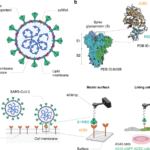
Understanding how do dogs get parvo is important to ensure that your dog gets the proper treatment. There are several causes of parvovirus and several treatments to help your dog overcome the illness. Read on to learn more about prevention, treatment and symptoms. Parvo is a viral infection that can cause serious complications, including anemia.
Symptoms
Symptoms of dog parvo can range from mild to severe, and the disease can lead to dehydration, shock, and even death. However, with proper care, parvo can be treated and your dog can recover. Treatment will usually include frequent, bland meals, anti-nausea medication, and a full course of antibiotics.
Dog parvo is a contagious disease that causes diarrhea and vomiting. It is most common in puppies but can affect older dogs as well. The stools are usually yellow, runny, or red, and have a strong odor. Although symptoms can appear within a day or two, it can take up to a week for your dog to improve.
Treatment for dog parvo involves antibiotics to prevent septicemia and probiotics to replace the healthy flora in the intestinal tract. Your dog will also be given intravenous fluids to combat dehydration, injectable vitamins to boost the immune system, and colostrum to coat the intestines. Prevention is the best way to avoid dog parvo, which can be fatal in a matter of hours. Your vet will be able to advise you on the best course of action.
Causes

Parvovirus is an infectious disease of dogs that attacks cells in the small intestine. The virus damages these cells and impairs the body’s ability to absorb nutrients. This causes dehydration, weakness, and loss of appetite. This disease is often fatal if left untreated.
Parvovirus is most common among puppies and young dogs, as well as dogs that have not been fully or partially vaccinated. Certain breeds are more susceptible to infection than others, and males are more likely to contract the disease than females. Even vaccinated dogs can contract parvo, so it is important to keep your dog vaccinated against parvo.
Parvo virus infection is treatable with the proper antibiotics. Most commonly used antibiotics are ampicillin, cephalexin, and fluoroquinolones. However, it is important to remember that parvo-infected dogs can still shed parvovirus in their stool for 14 days after recovery.
Treatment
Treatment of parvo in dogs involves the administration of broad-spectrum antibiotics to fight the infection and prevent secondary septic infections. These drugs include amoxicillin, cephalexins, and flouroquinolones. The dosage of these drugs is dependent on the age of the pup. In some cases, a combination of these medications is prescribed.
The treatment of parvo in dogs is intensive and can last up to two weeks. The puppy must be kept clean and dry and may require an IV line or feeding tube. The patient’s abdominal area must be palpated every few hours. In severe cases, the patient may suffer from abdominal intussusception, which is extremely painful. It is recommended that the hospital treat parvo patients on a separate floor and isolate the pet from the rest of the hospital.
Symptoms of parvovirus infection can be subtle or severe. The signs include fever, joint pain, and swollen lymph nodes. These symptoms occur if the virus enters the bloodstream and spreads through organs and tissues. This type of infection is known as systemic parvovirus infection.
Prevention
Parvo virus is easily spread through contact with an infected dog’s feces or hair. It can also be spread through objects that your dog has walked on. Although a dog with the virus may not become ill immediately after exposure, it will usually get ill within six to ten days. It is important to keep your dog isolated from other dogs, and to keep all objects that your dog comes in contact with thoroughly clean.
The best way to prevent the spread of the virus is vaccination. The virus is mainly transmitted in shelters and breeding kennels. It is also more common in certain dog species, such as Rottweilers, Pit Bulls, Labradors, and German Shepherds, but other breeds are also susceptible. For the prevention of parvo in dogs, you can start by vaccinating your dog against parvovirus, a virus that can live outside of your dog’s body for months or years.
Parvovirus vaccination is very effective in preventing the disease. Parvo virus vaccine is usually paired with the distemper virus vaccine. It is essential that you follow the recommendations of your veterinarian when administering the vaccine. In fact, vaccine manufacturers guarantee the efficacy of the vaccine if administered by a veterinarian.








